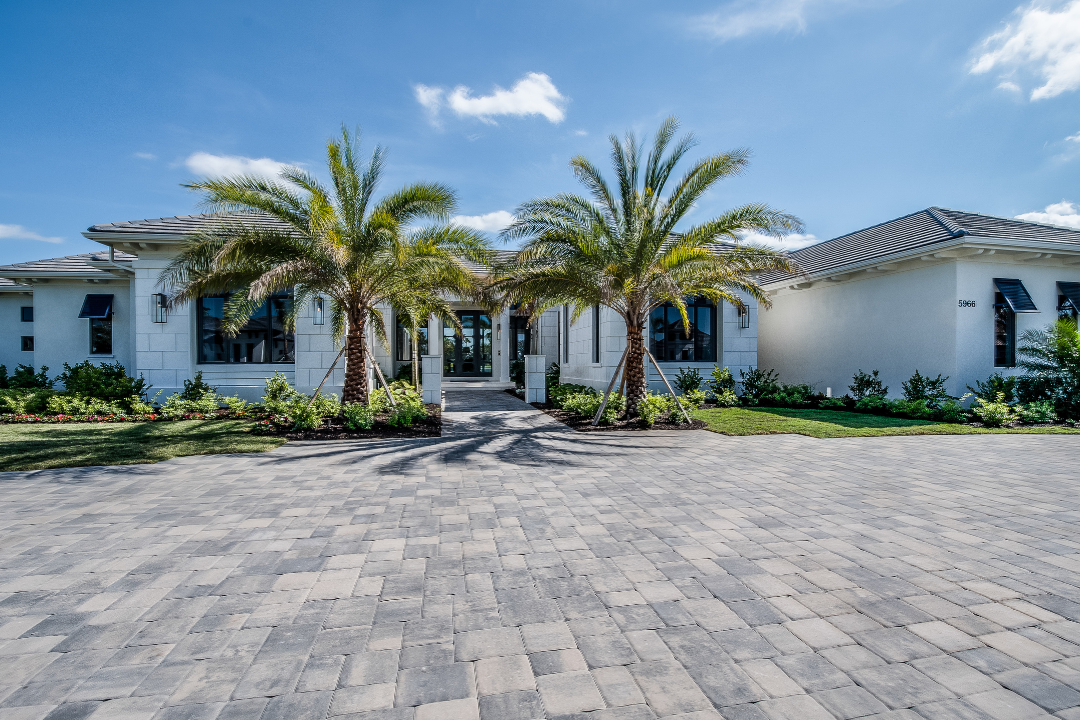In the dynamic world of real estate, Leaseback Options have emerged as a versatile solution for both property owners and investors. This unique arrangement, often seen as a win-win, allows homeowners to sell their property and then lease it back from the new owner. It provides financial flexibility while allowing the occupants to remain in their beloved homes. As we delve deeper into this topic, we’ll explore how KROY Investments leverages Leaseback Options to create beneficial outcomes for all parties involved.
Leaseback Options: A Comprehensive Guide
Benefits of Leaseback Options
Leaseback options offer homeowners financial flexibility without the need to relocate. They provide an immediate influx of cash by unlocking the equity tied up in the property. For investors, leasebacks guarantee a tenant, ensuring a steady income stream. Moreover, this arrangement fosters trust between the buyer and seller, given the unique nature of the transaction.
How Leasebacks Differ from Traditional Sales
In traditional property sales, the seller vacates the property post-sale. However, with leasebacks, the seller remains as a tenant, leasing the property from the new owner. This allows homeowners to access their property’s value without uprooting their lives. It’s a win-win, offering both parties distinct advantages tailored to their needs.
Delving into Leaseback Options
The Growing Popularity of Leasebacks
Leaseback options are rapidly gaining traction in the real estate world. Their dual benefit of providing homeowners with liquidity while allowing them to stay in their homes makes them an attractive choice for many.
Leasebacks vs. Traditional Sales: A Comparative Look
While traditional sales require homeowners to move out, leasebacks offer a unique proposition. Homeowners can continue residing in their property, enjoying the comfort of their home while benefiting from the sale’s financial gains.

Understanding Leaseback Options
Before we delve into the intricacies of leaseback options, it’s crucial to grasp the basic concept.
What is a Leaseback Option?
A leaseback option, as the name suggests, is a financial arrangement where the seller of a property immediately leases it back from the buyer after the sale. This arrangement allows the seller to continue living in the property while freeing up the capital tied up in the asset.
How Does a Leaseback Work?
So, how does a leaseback work? The process is relatively straightforward. The property owner sells the property to a buyer, who then becomes the new owner. The original owner then rents the property back from the new owner, typically on a long-term lease. This arrangement allows the original owner to access the equity in their property while still living in it.
Leaseback Option Meaning
In essence, the leaseback option meaning revolves around flexibility and financial liquidity. It’s a strategic move that allows homeowners to unlock the value of their property without having to move out. It’s a popular option for those who need cash but want to stay in their homes, and companies like KROY Investments are making this option more accessible to a wider audience.
The Pros and Cons of Leasebacks
As with any financial decision, it’s important to weigh the pros and cons before diving in. Let’s explore the potential benefits and drawbacks of leasebacks.
Are Leasebacks a Good Investment in Miami?
In the vibrant real estate market of Miami, leasebacks can indeed be a good investment. They provide a steady income stream for the new property owner while offering the original owner the chance to free up capital. However, like any investment, it’s crucial to consider factors such as property value, rental rates, and market conditions. KROY Investments can provide expert guidance in this area.
Are Leasebacks Common in Florida?
Leasebacks are becoming increasingly common in Florida, particularly in high-demand areas like Miami. The state’s robust real estate market and the attractive prospect of maintaining occupancy while accessing equity make leasebacks a popular choice for many homeowners.
Difference Between Sale and Leaseback
It’s important to understand the difference between a traditional sale and a leaseback. In a standard sale, the seller moves out after the transaction. However, in a leaseback, the seller remains in the property as a tenant. This unique arrangement can offer financial benefits to both parties, making it an attractive option in the right circumstances.
Exploring Different Leaseback Options in Miami
Lease Back Option in Real Estate
In the real estate sector, leaseback options are gaining traction. These arrangements provide homeowners with the opportunity to unlock the equity in their property while continuing to reside in it. In Miami’s bustling real estate market, this can be a particularly attractive option.
Sale-Leaseback Options in Miami-Dade County
Sale-leaseback options are becoming increasingly popular in Miami-Dade County. This arrangement allows homeowners to sell their property and then lease it back, providing them with a lump sum of cash while allowing them to stay in their homes.
Leaseback Companies in South Florida
Several leaseback companies operate in South Florida, offering a range of services to homeowners and investors. Companies like KROY Investments provide expert guidance and support, helping clients navigate the complexities of leaseback arrangements.
Lease Back Option for Home
A lease-back option for the home can be an excellent solution for homeowners who need to access the equity in their property but don’t want to move. This arrangement allows homeowners to sell their property and then lease it back from the new owner.
Deep Dive into Leaseback Options
Buy and Lease Back in Brickell, Miami
In the upscale neighborhood of Brickell, Miami, the buy-and-lease-back option is becoming increasingly popular. This arrangement allows homeowners to sell their property and then lease it back, providing them with a lump sum of cash while allowing them to stay in their homes.
Purchase Lease Back
The purchase lease-back option is another arrangement that’s gaining popularity. This involves the homeowner selling their property and then leasing it back from the new owner, providing them with a lump sum of cash while allowing them to stay in their home.
Owner Lease Back
The owner lease back option is a similar arrangement where the homeowner sells their property and then leases it back from the new owner. This can be an excellent solution for homeowners who need to access the equity in their property but don’t want to move.
Understanding Sale and Lease Back Leasing
Sales and Lease Back Leasing
Sales and leaseback leasing is a type of leaseback arrangement where the homeowner sells their property and then leases it back from the new owner. This arrangement can provide homeowners with a lump sum of cash while allowing them to stay in their homes.
What are Examples of Leaseback in Miami?
In Miami, examples of leaseback arrangements can be found across the city. From homeowners in Brickell selling their luxury condos and leasing them back, to businesses in Downtown Miami selling their premises and leasing them back to maintain their location while freeing up capital.
What are the Types of Sale-Leaseback in Florida?
In Florida, there are several types of sale-leaseback arrangements available. These range from residential leasebacks, where homeowners sell their property and lease it back, to commercial leasebacks, where businesses sell their premises and lease them back.
Structuring a Sale-Leaseback in Miami
Is Sale-Leaseback a Good Idea in Miami?
In Miami’s vibrant real estate market, a sale-leaseback can be a good idea for many homeowners. This arrangement allows homeowners to access the equity in their property while continuing to reside in it.
How Do You Structure a Sale-Leaseback in Florida?
Structuring a sale-leaseback in Florida involves several steps. First, the homeowner sells their property to a buyer. The buyer then leases the property back to the original owner, who continues to live in the property while paying rent to the new owner.
Conclusion: Exploring Leaseback Options
Understanding leaseback options in Miami, Florida, can open up new opportunities for homeowners and investors alike. Whether you’re looking to unlock the equity in your home or invest in the vibrant Miami real estate market, leaseback options offer a flexible solution. If you’re interested in exploring leaseback options further, contact KROY Investments today for expert guidance and support.
Frequently Asked Questions: Leaseback Options
What is a leaseback option?
A leaseback option is a financial arrangement where a property owner sells their property and then leases it back from the buyer. This allows the original owner to continue living in the property while accessing the equity tied up in it.
How does a leaseback work?
In a leaseback, the property owner sells the property to a buyer. The buyer then leases the property back to the original owner, typically on a long-term lease, allowing the original owner to stay in their home.
Are leasebacks a good investment?
Leasebacks can be a good investment as they provide a steady income stream for the new property owner. However, like any investment, it’s important to consider factors such as property value, rental rates, and market conditions.
Are leasebacks common?
Leasebacks are becoming increasingly common, particularly in high-demand real estate markets. They offer a unique solution for homeowners who need to access the equity in their property but want to stay in their home.
What is the difference between sale and leaseback?
In a standard sale, the seller moves out after the transaction. However, in a leaseback, the seller remains in the property as a tenant, providing them with the opportunity to access the equity in their property while still living in it.
What are some examples of leaseback options?
Leaseback options can vary widely, but common examples include residential leasebacks, where homeowners sell their property and lease it back, and commercial leasebacks, where businesses sell their premises and lease them back.
What are the types of sale-leaseback?
There are several types of sale-leaseback arrangements, ranging from residential leasebacks, where homeowners sell their property and lease it back, to commercial leasebacks, where businesses sell their premises and lease them back.
Is a sale-leaseback a good idea?
A sale-leaseback can be a good idea for many homeowners. It allows homeowners to access the equity in their property while continuing to reside in it, providing financial flexibility.
How do you structure a sale-leaseback?
Structuring a sale-leaseback involves several steps. First, the homeowner sells their property to a buyer. The buyer then leases the property back to the original owner, who continues to live in the property while paying rent to the new owner.
Where can I find more information about leaseback options?
For more information about leaseback options, you can consult with real estate professionals, financial advisors, or companies like KROY Investments that specialize in these types of arrangements.

